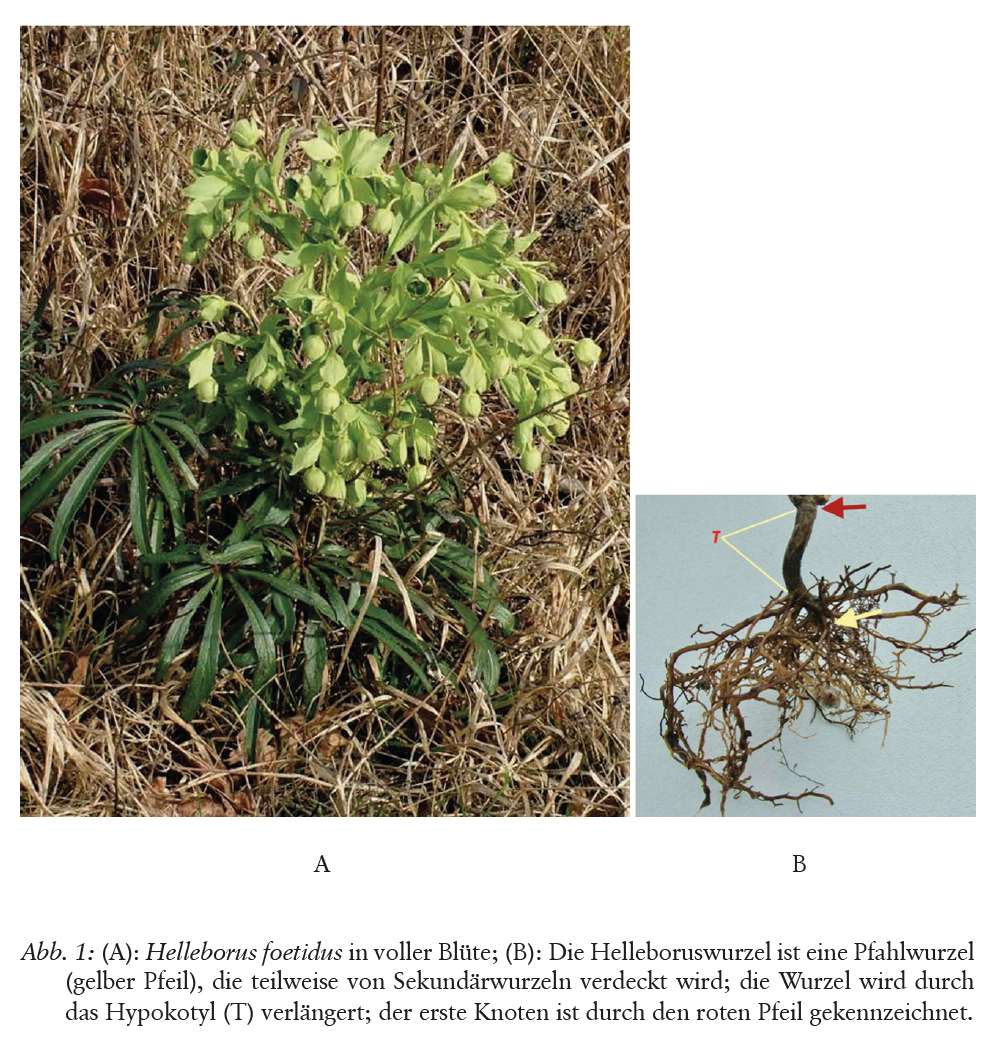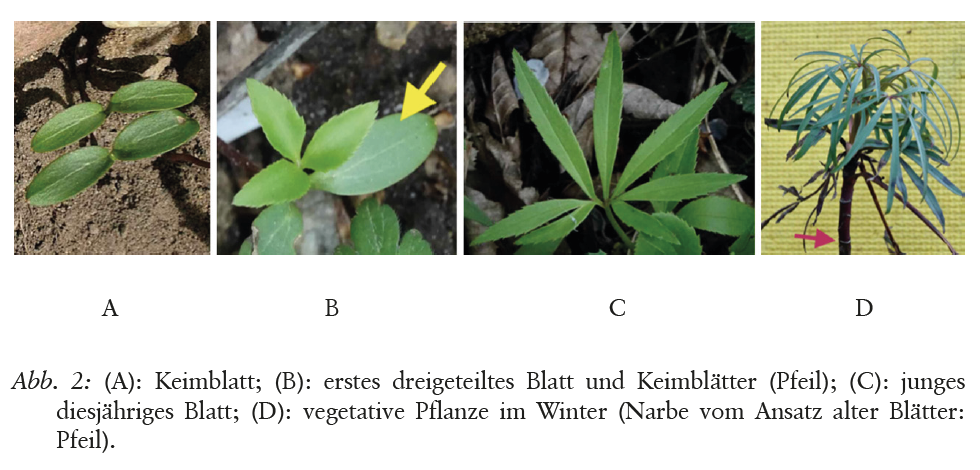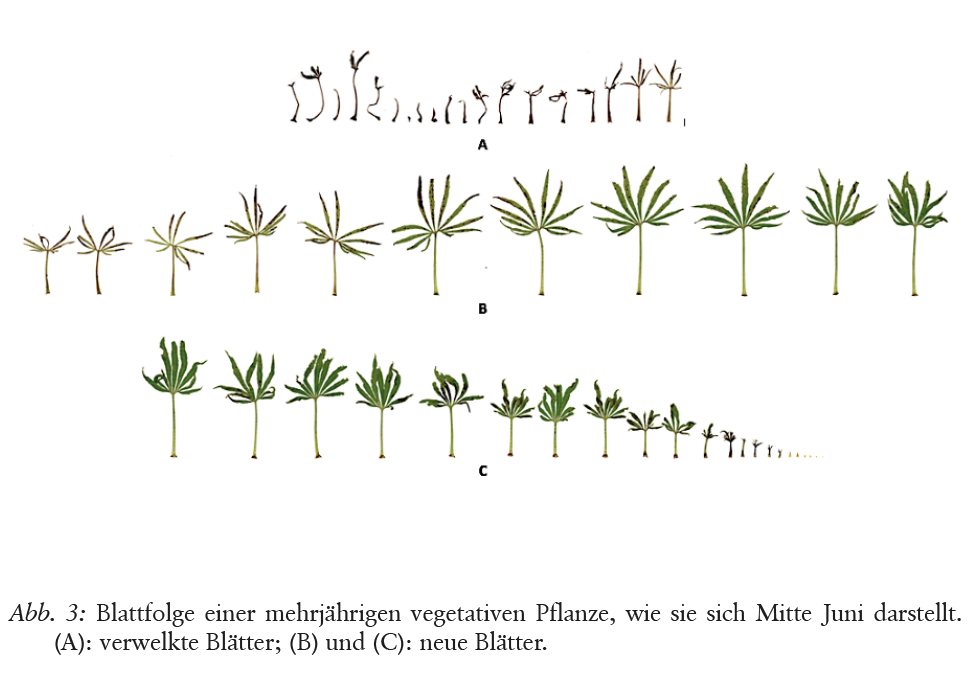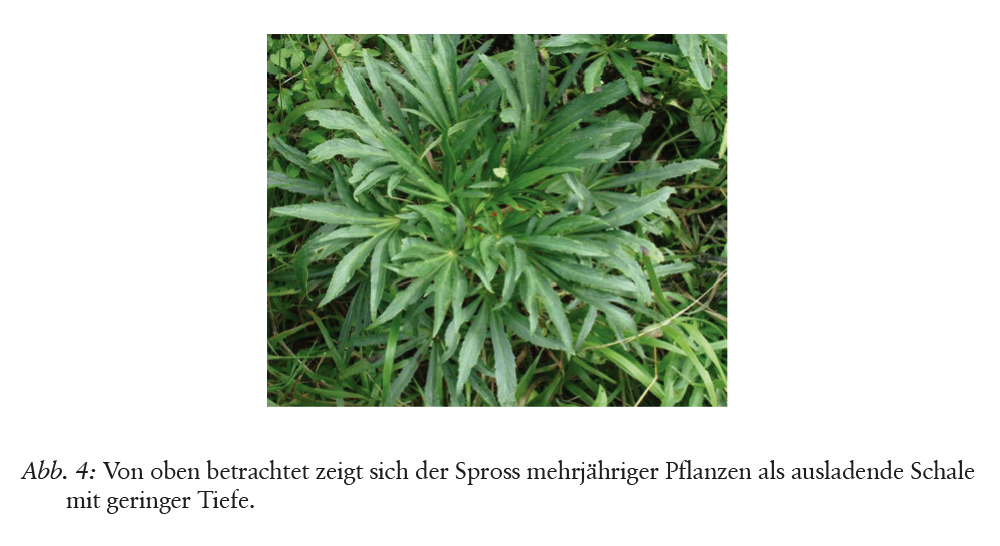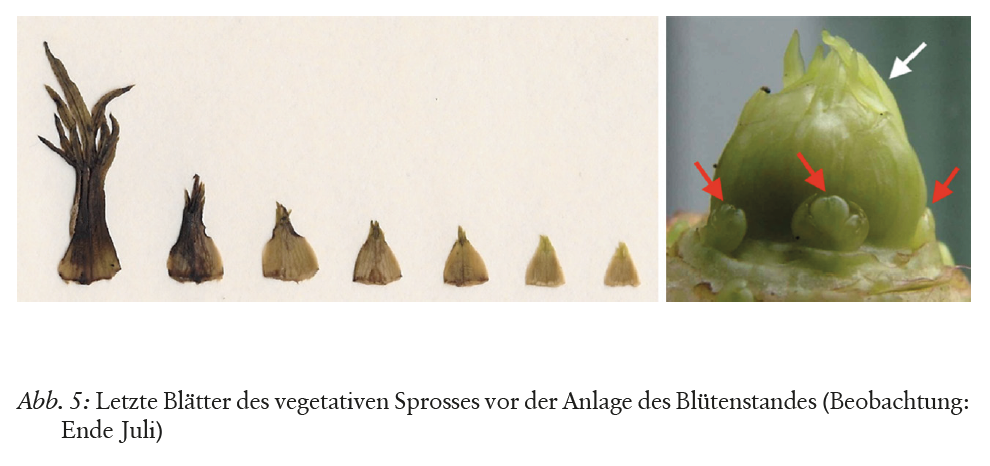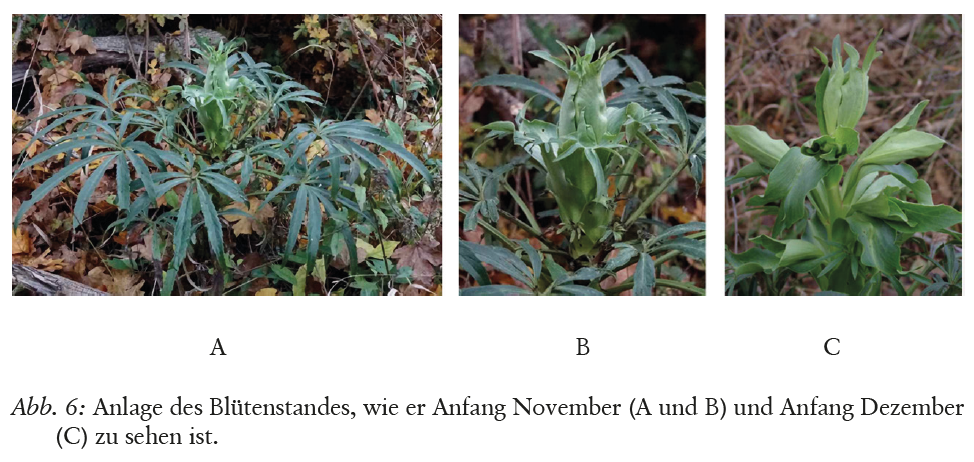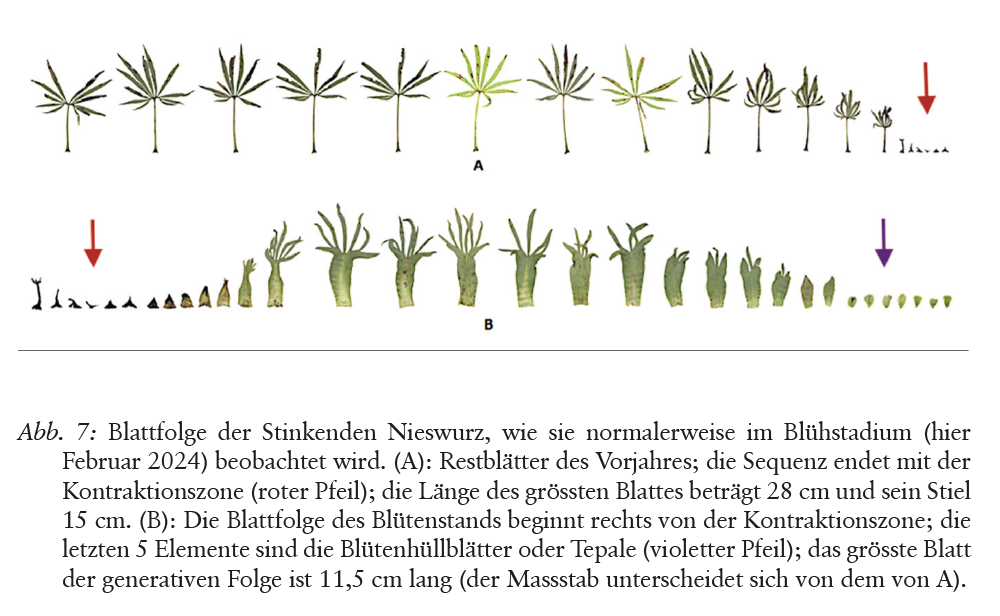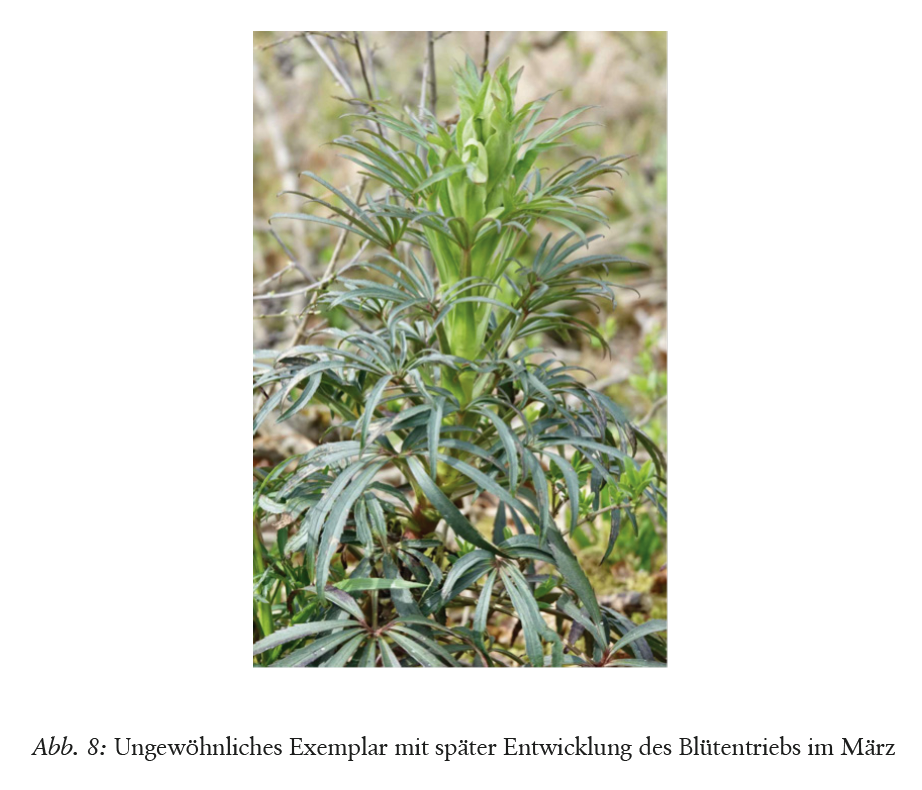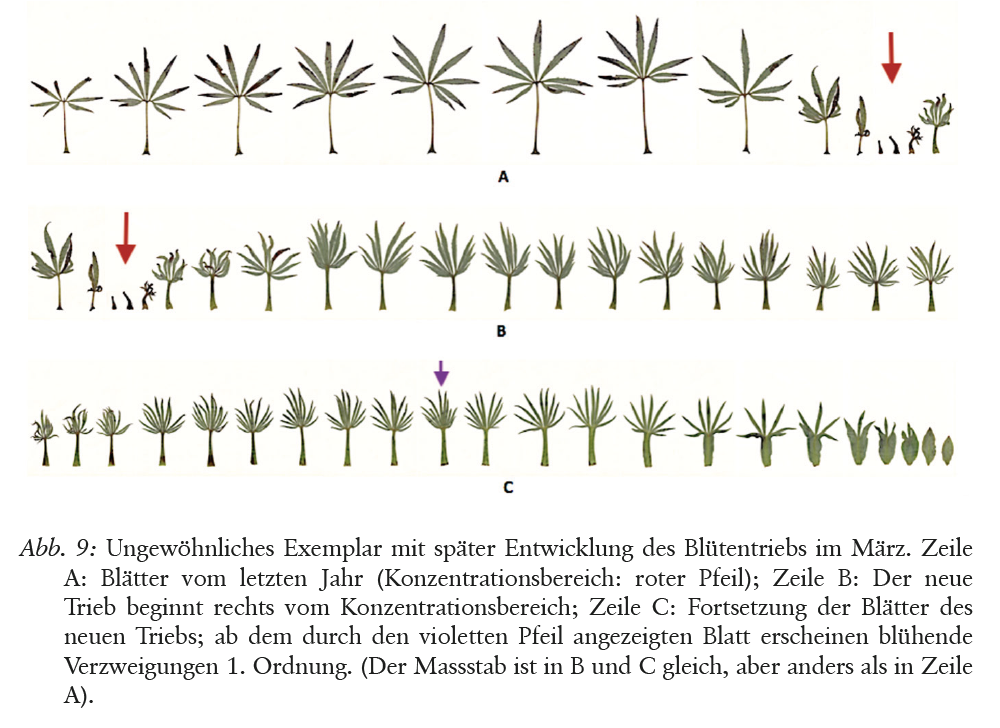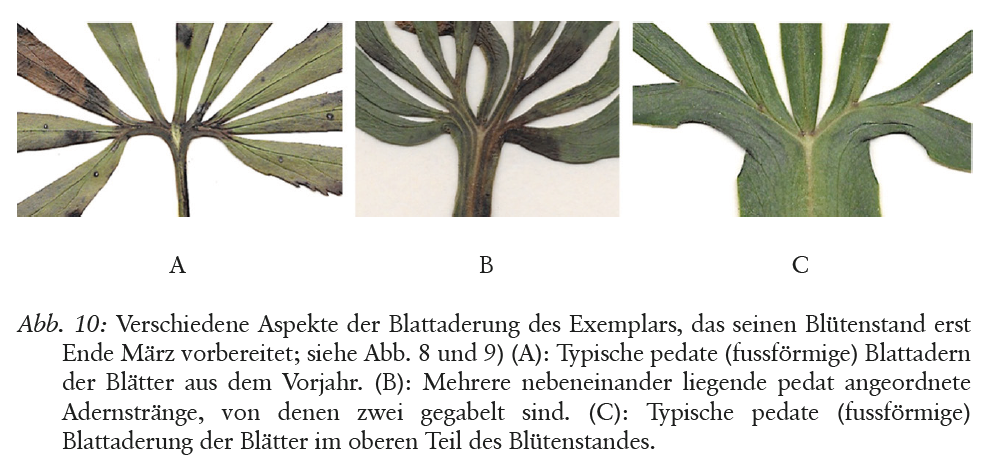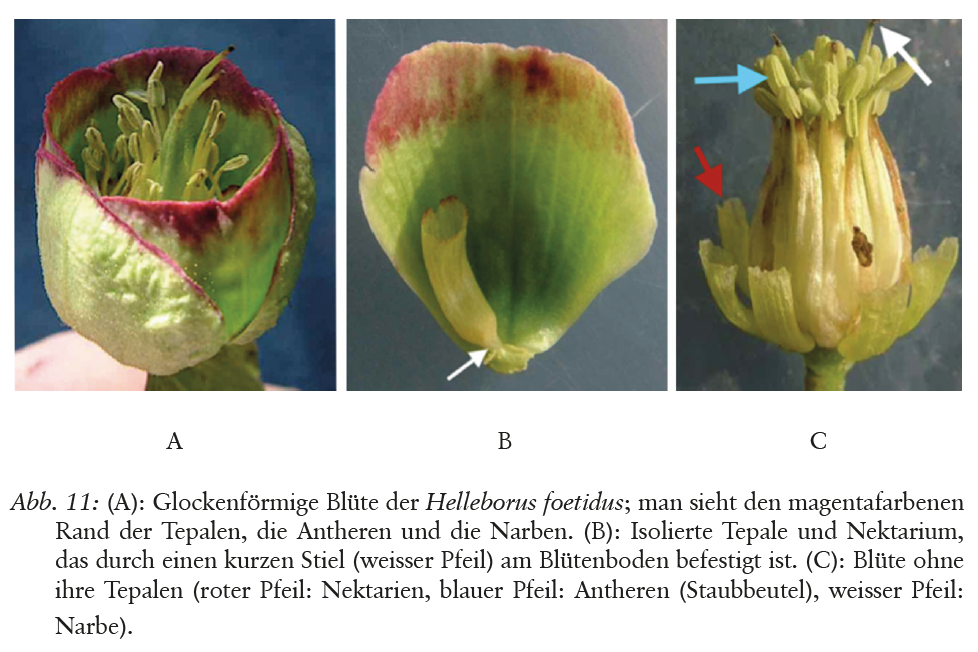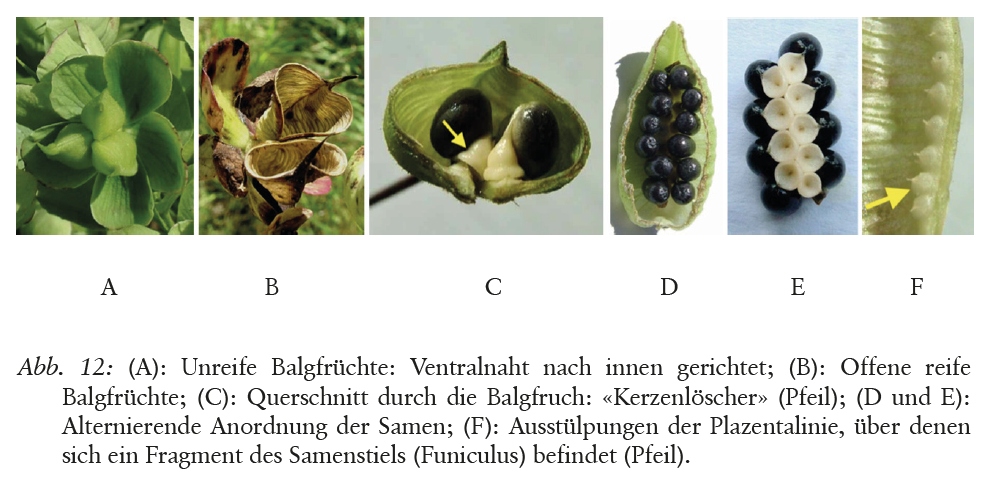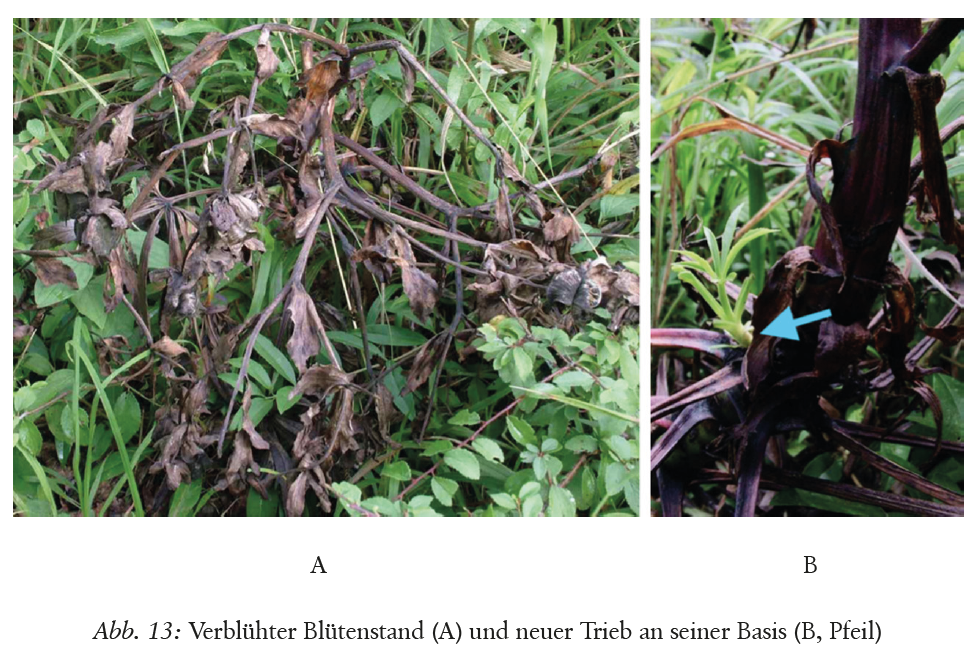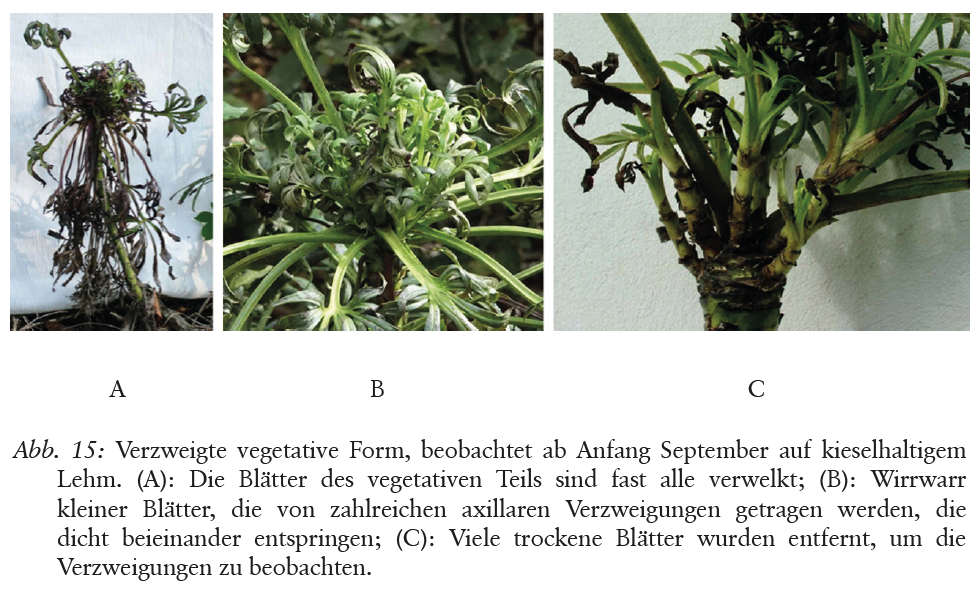Die Stinkende Nieswurz (Helleborus foetidus L.) und ihre Geheimnisse
Elemente der Naturwissenschaft
122,
2025,
P.
5-22 |
DOI:
10.18756/edn.122.5
Article | Language: German | €6.00
Export Article Citation as
- Plain text
- BibTeX
- RIS format
- Download price : € 6.00
Abstract:
The continuous growth of the leafy stem of stinking hellebore (Helleborus foetidus) is halted after several years by the flowering process, which would lead to the death of the stem. The plant gets around this by producing new basal shoots and reproducing vegetatively. The flowering process, which is prolonged by fruit formation, extends over the whole year, but is usually delayed compared to the flowering behaviour of the surrounding vegetation. The inflorescence may seem like a new, independent formation at the top of the vegetative part of the plant. The structure of the flower is primitive: its simple perianth (tepals) is characterised by vegetative qualities, weak signalling and reversion after pollination.
